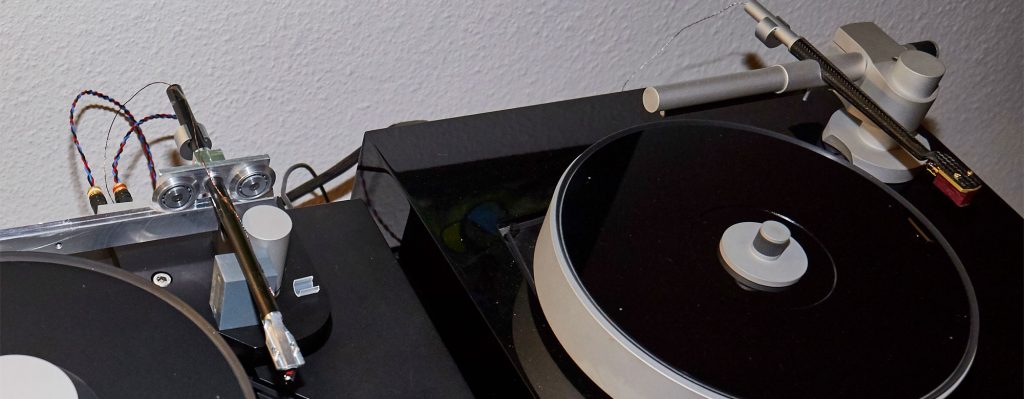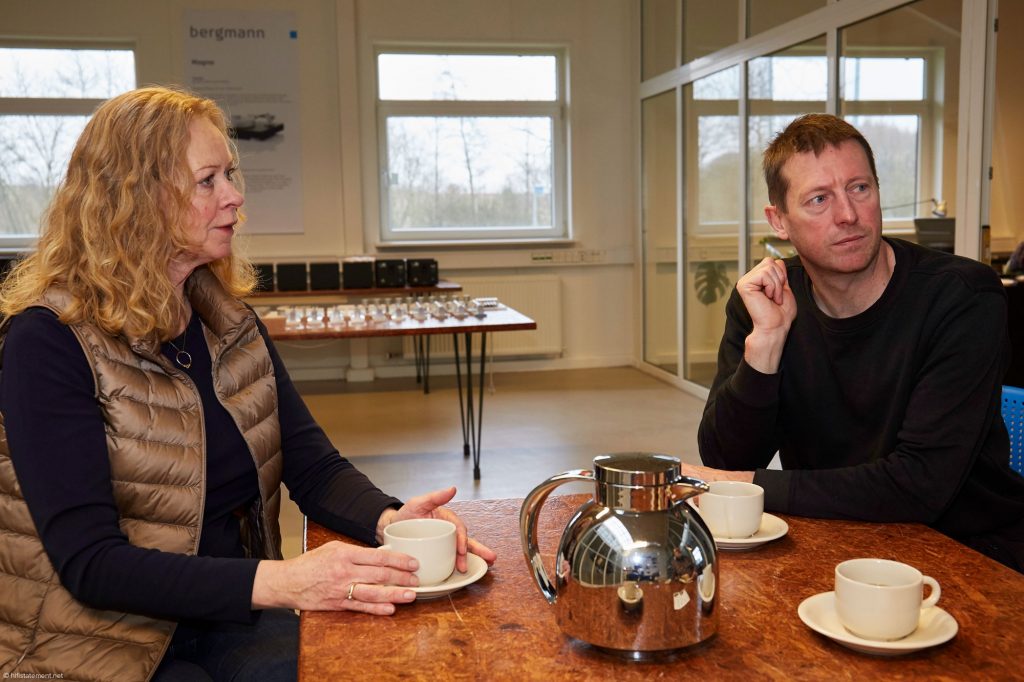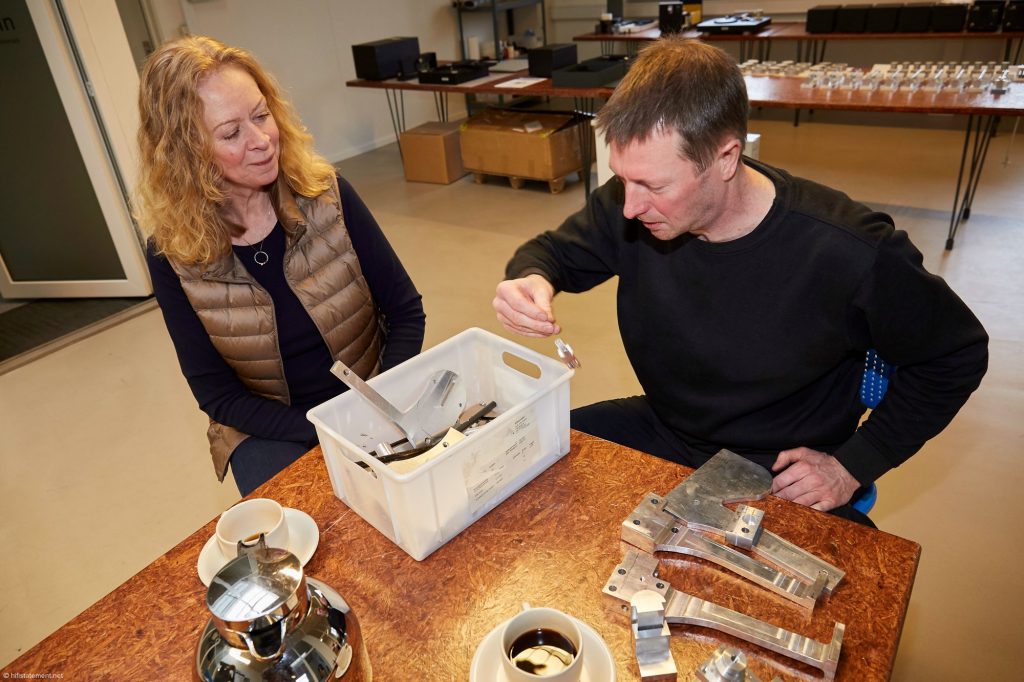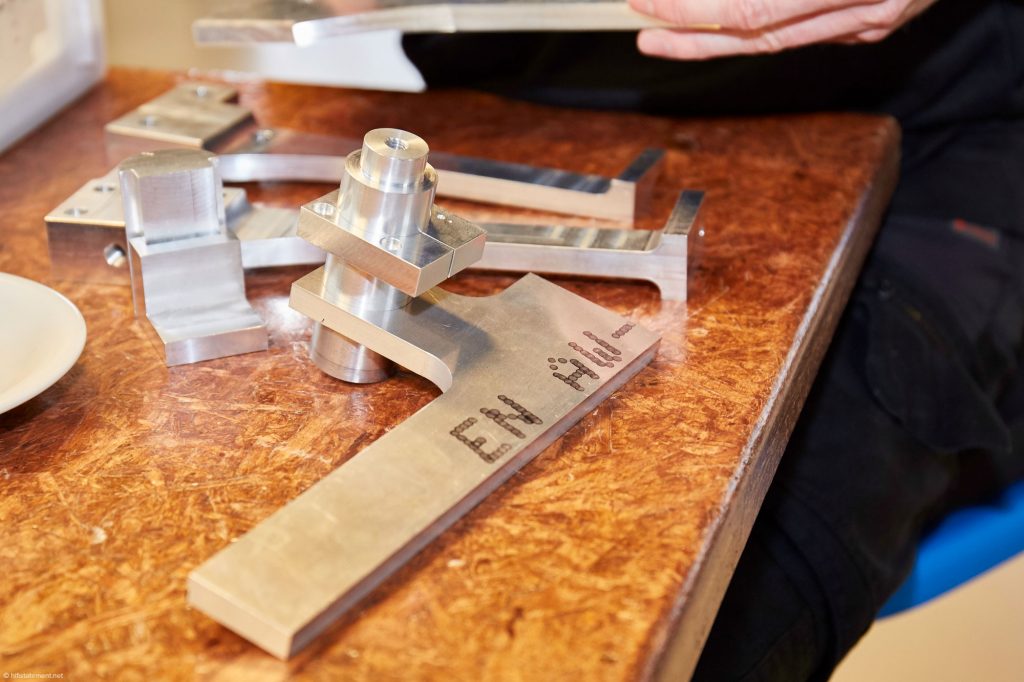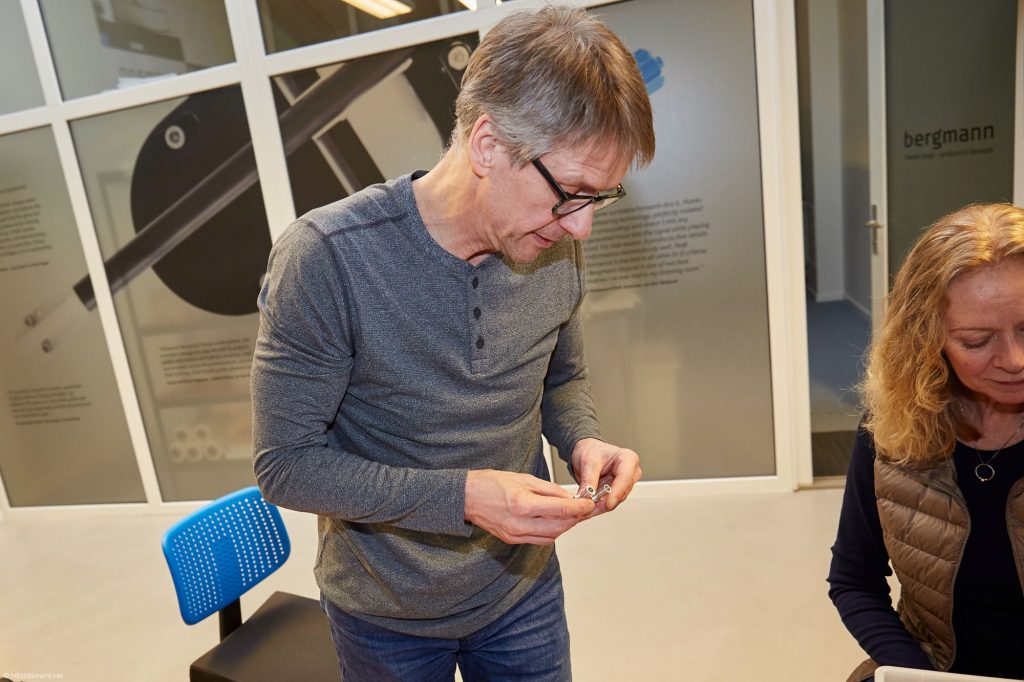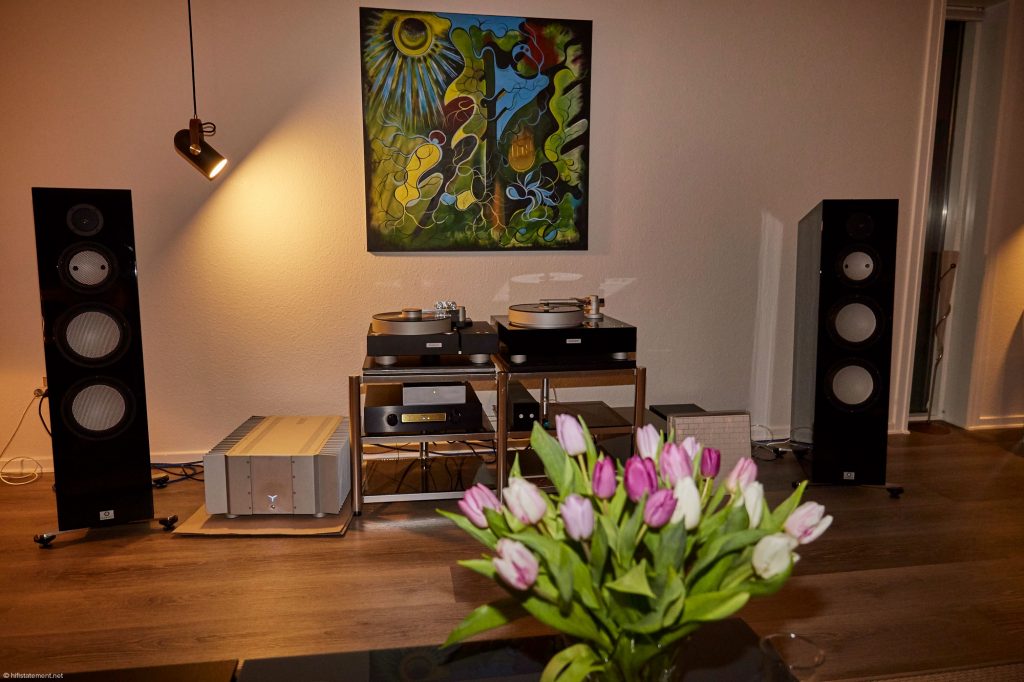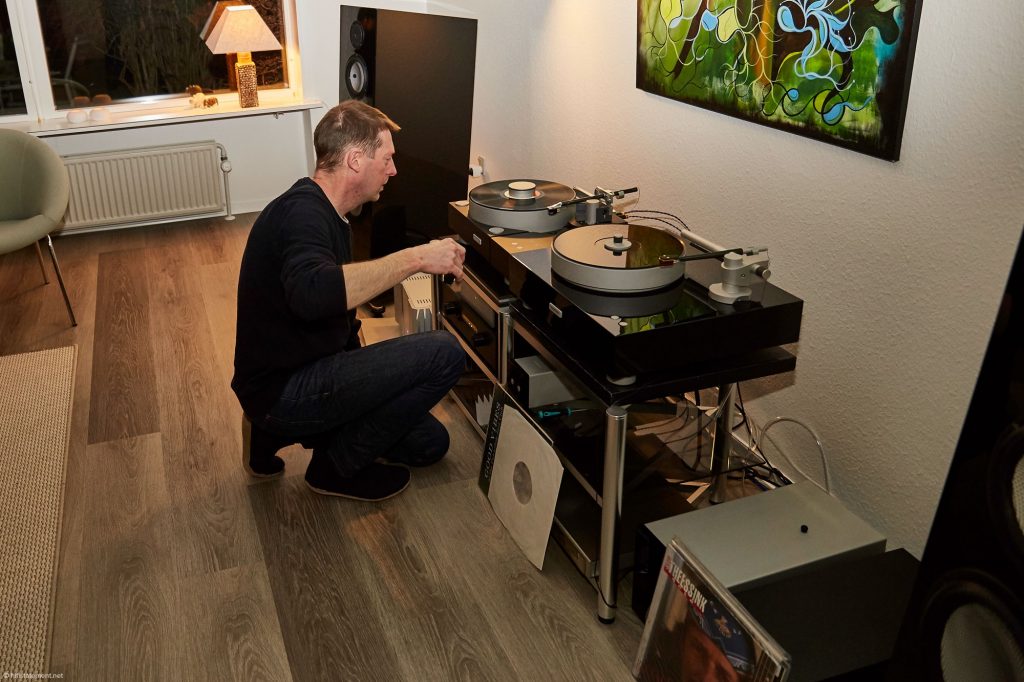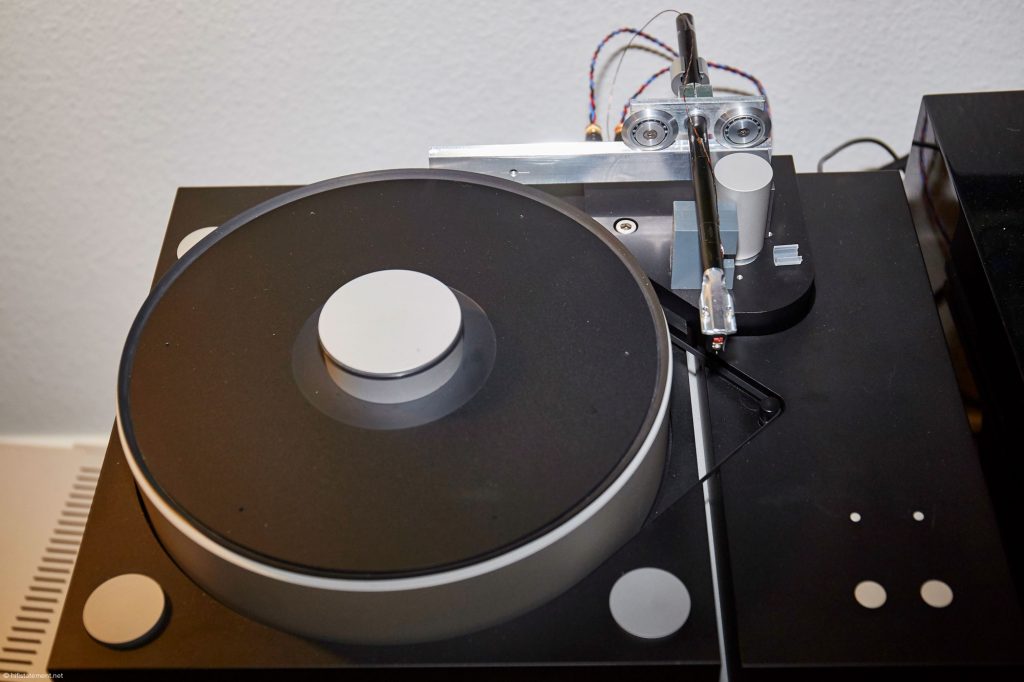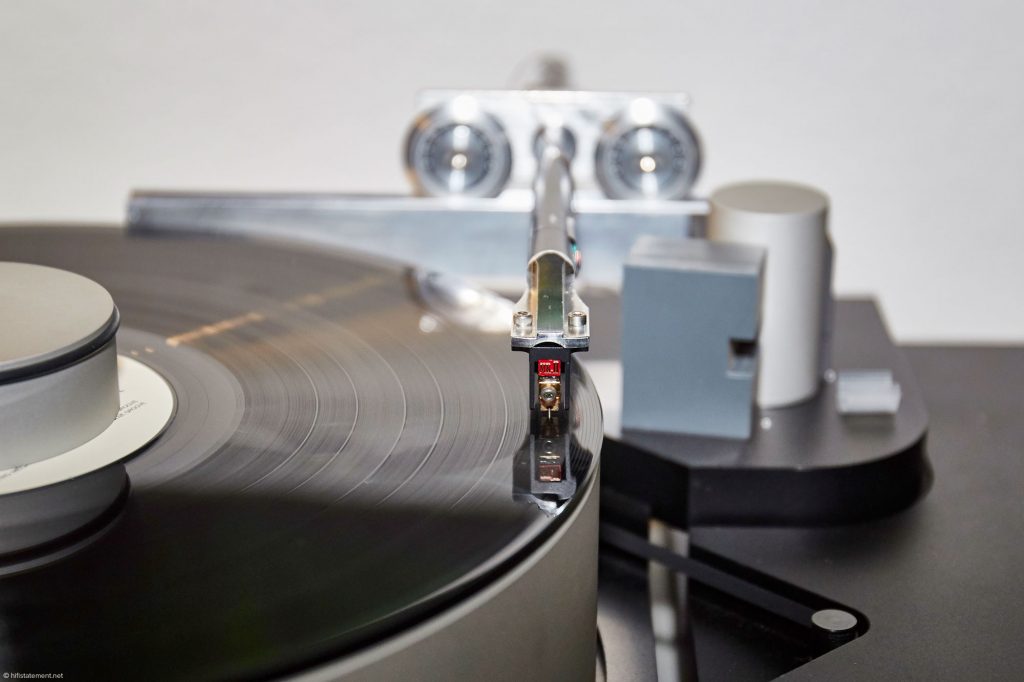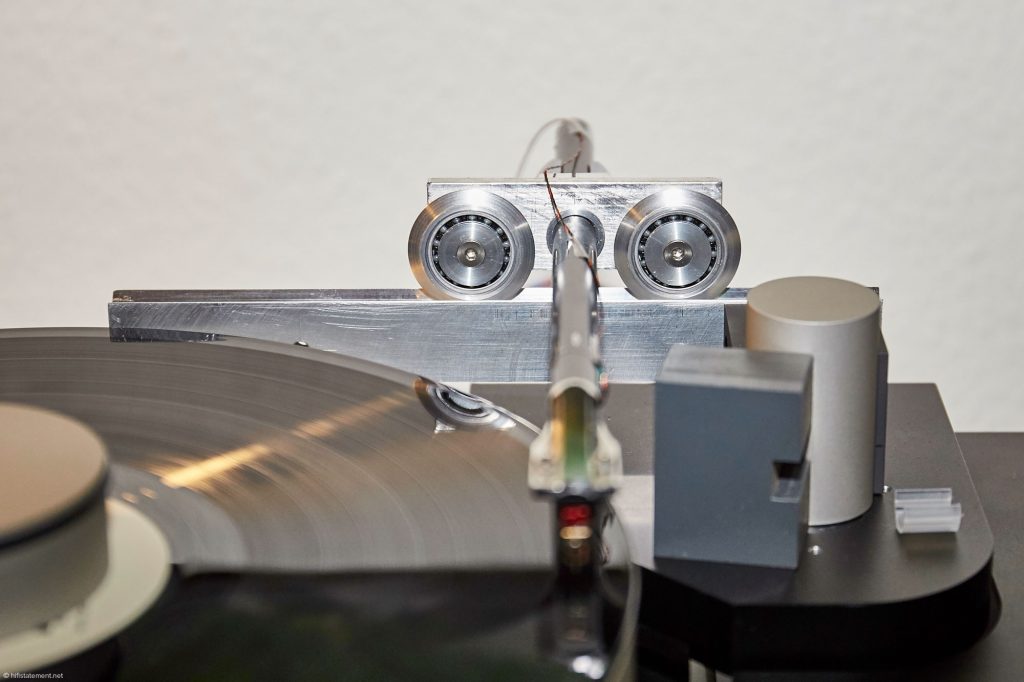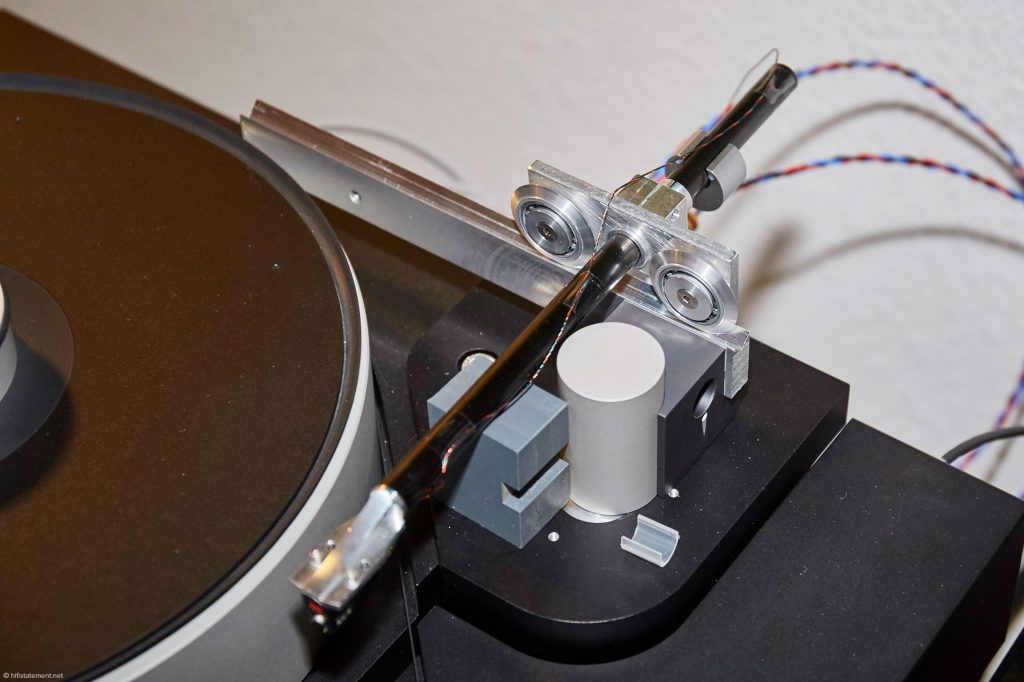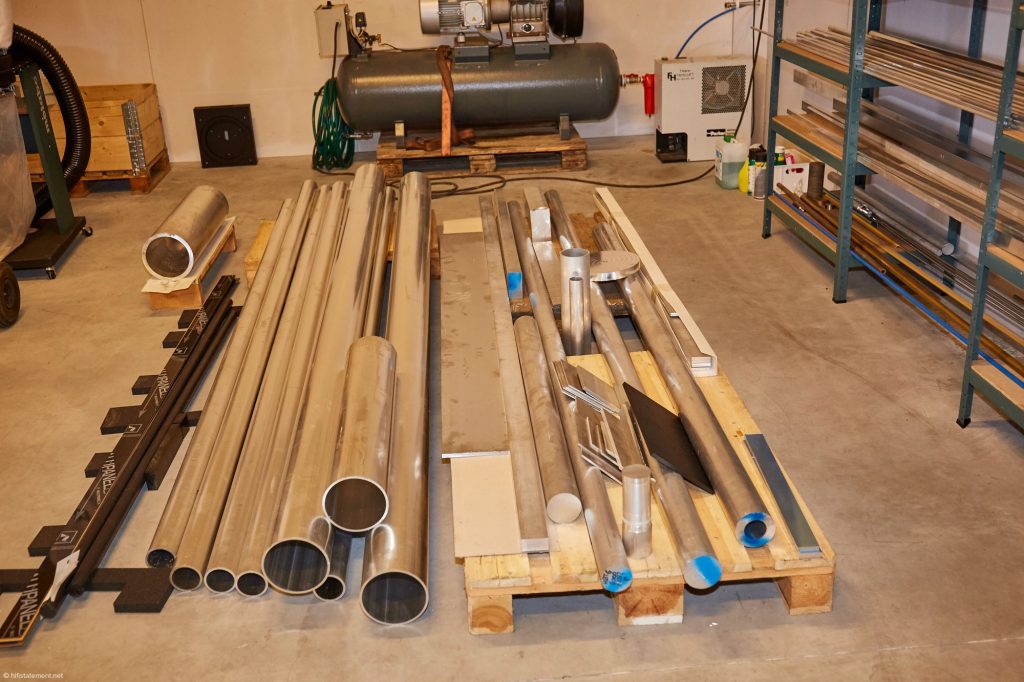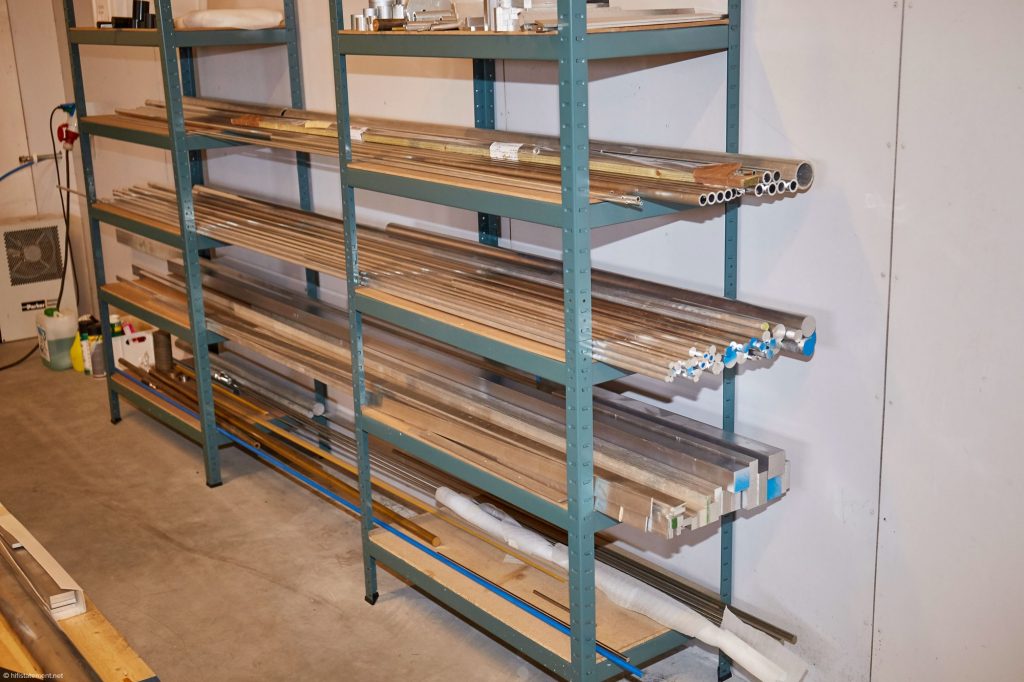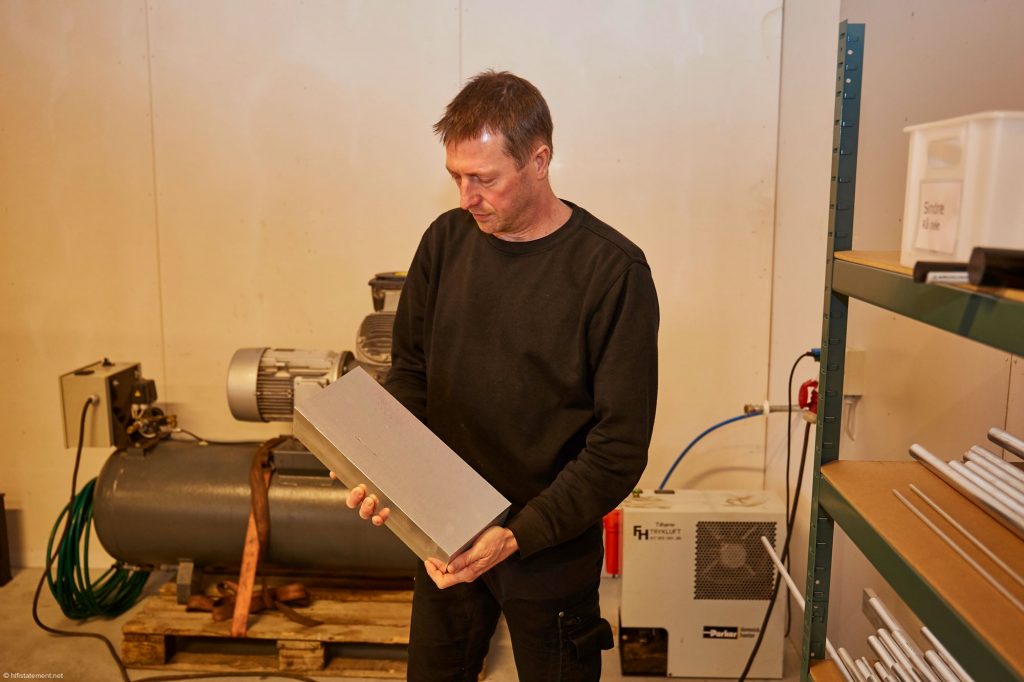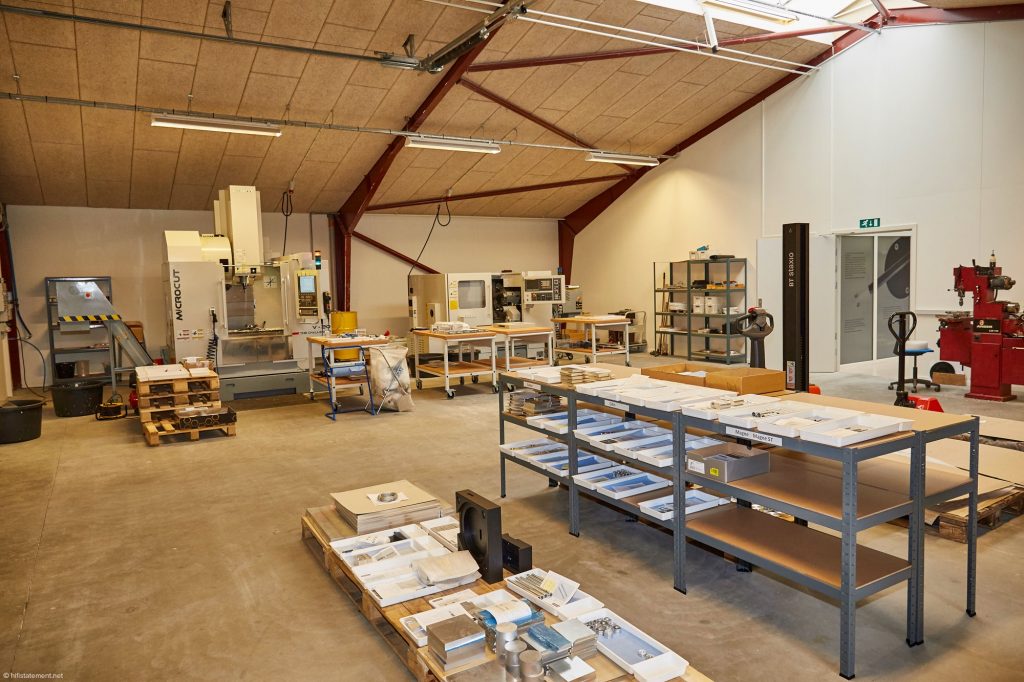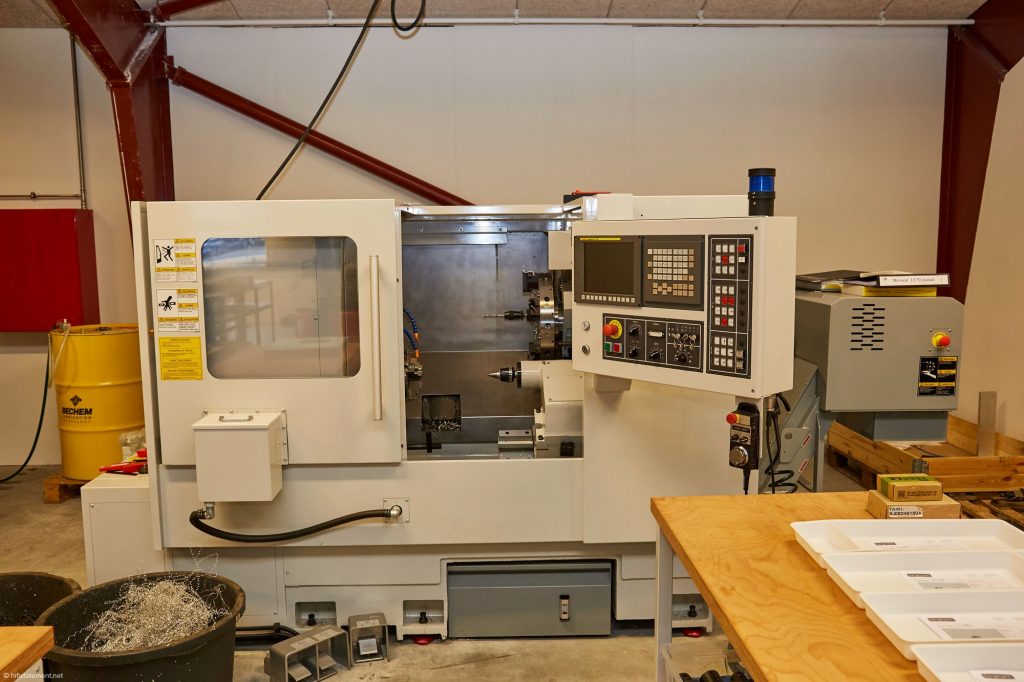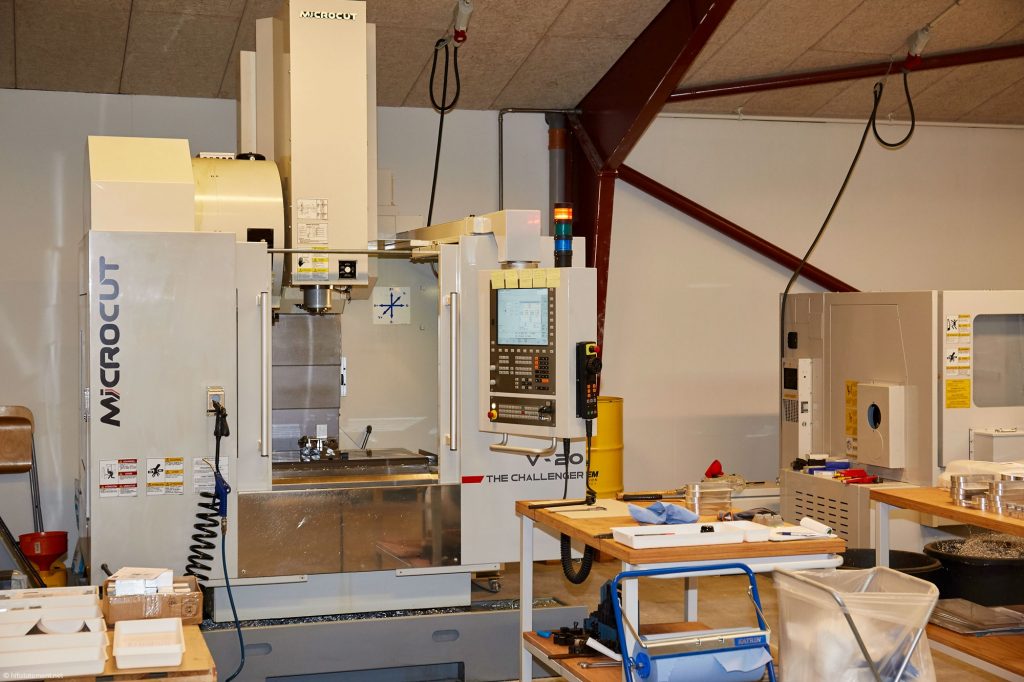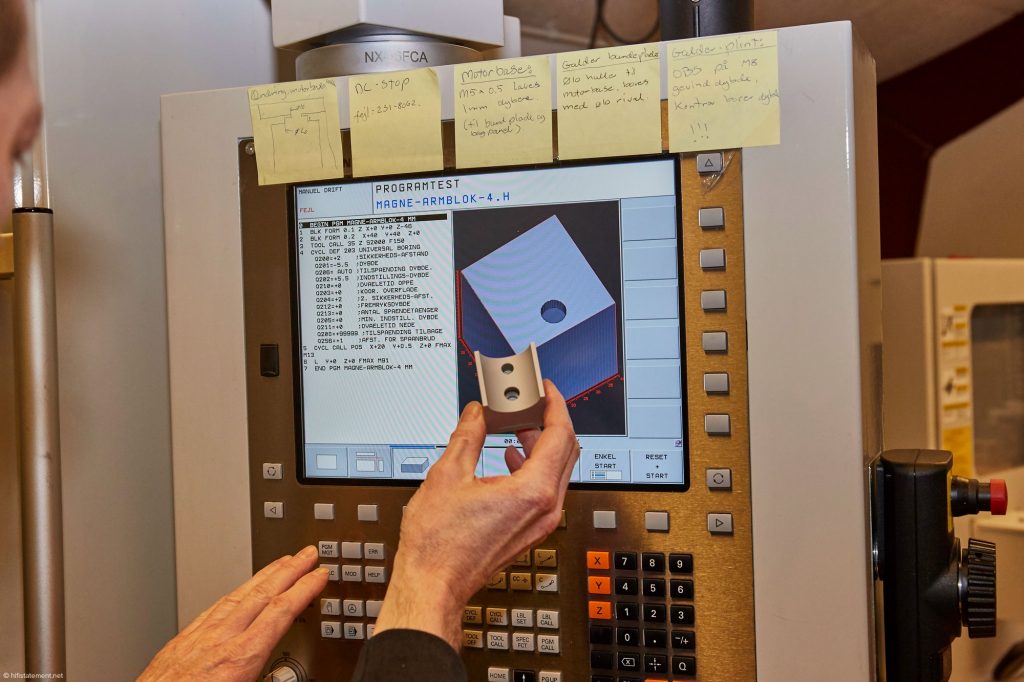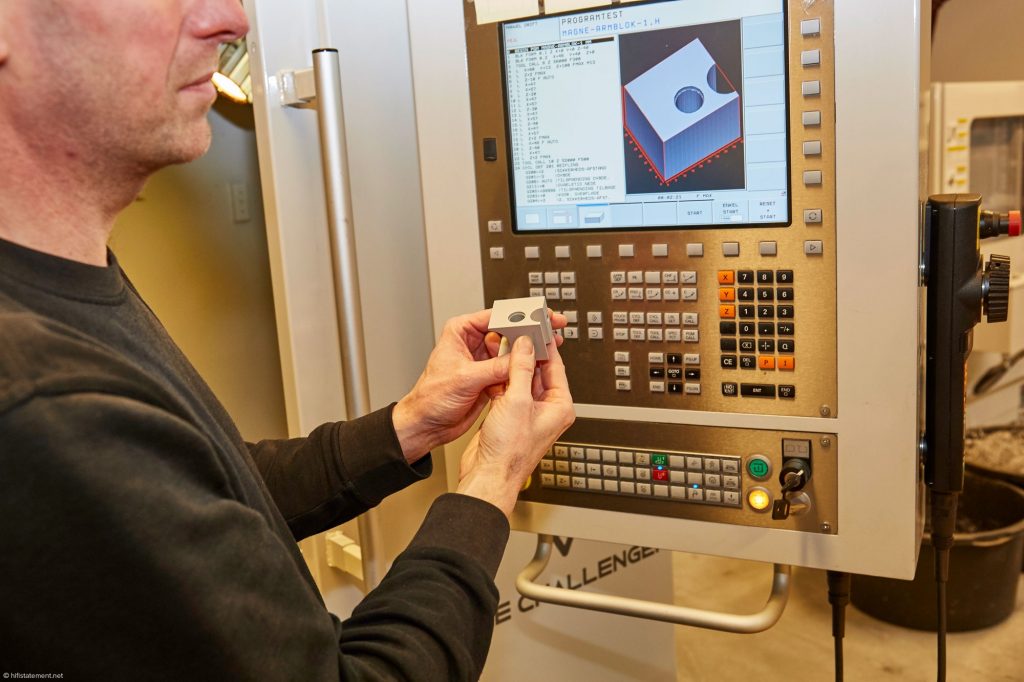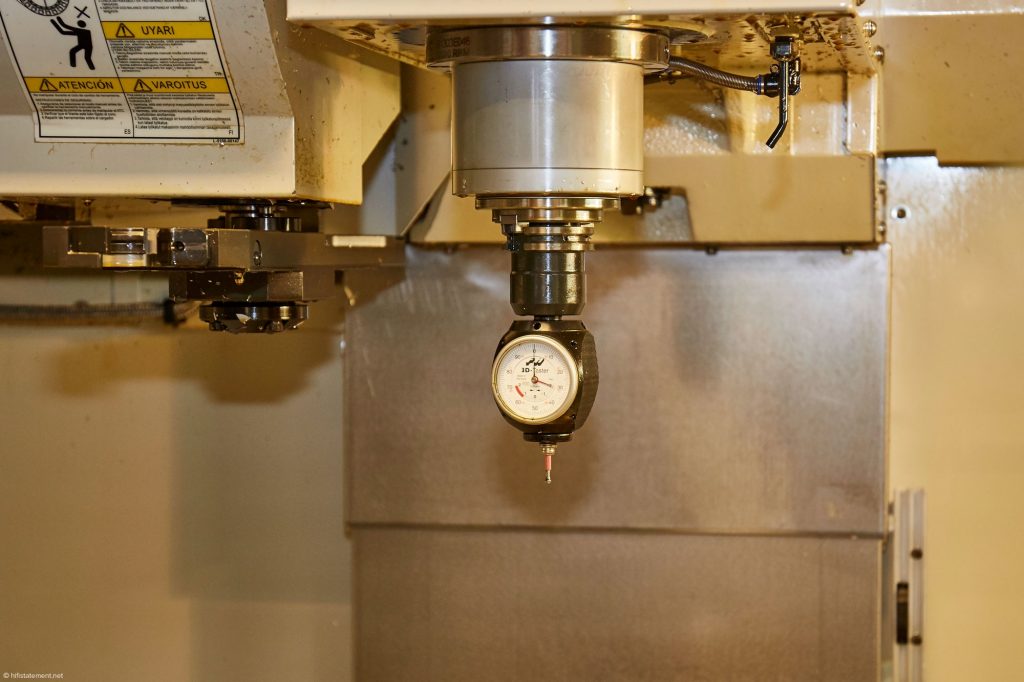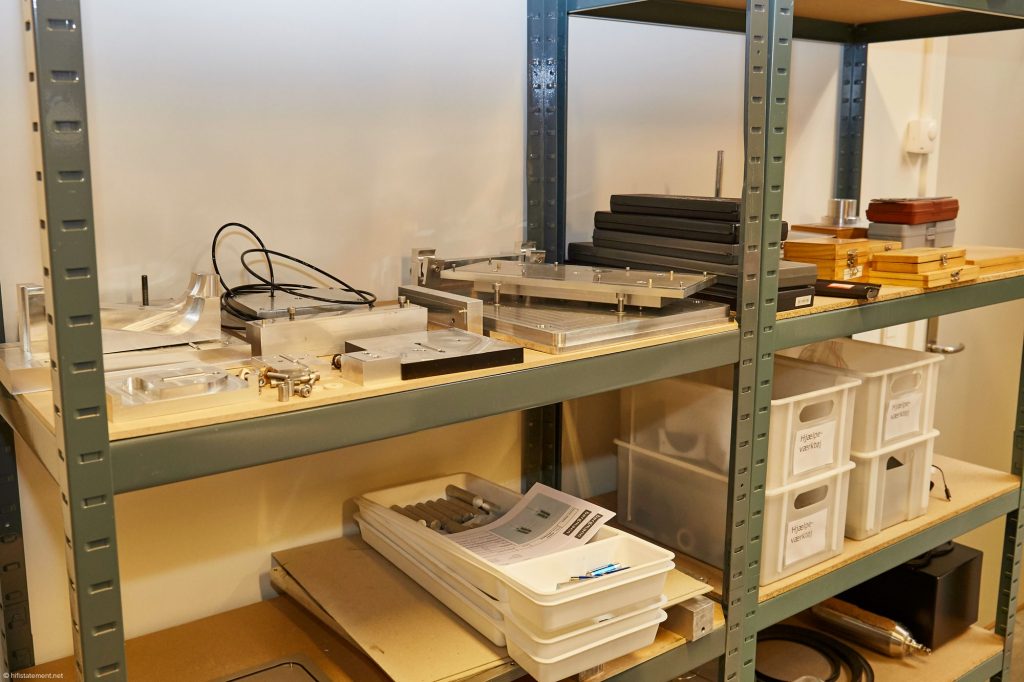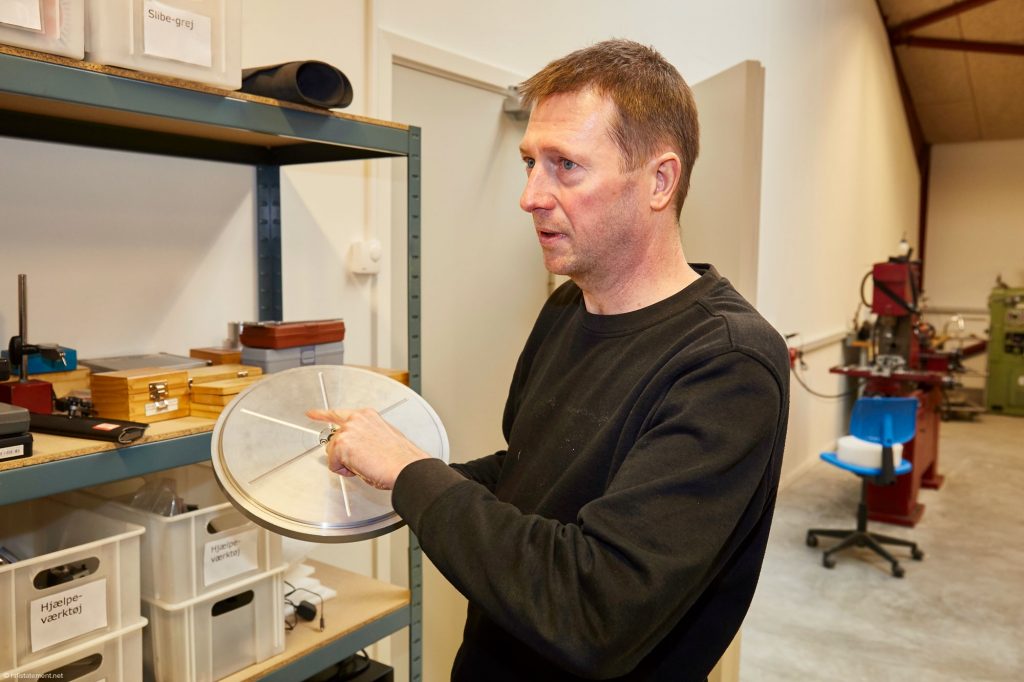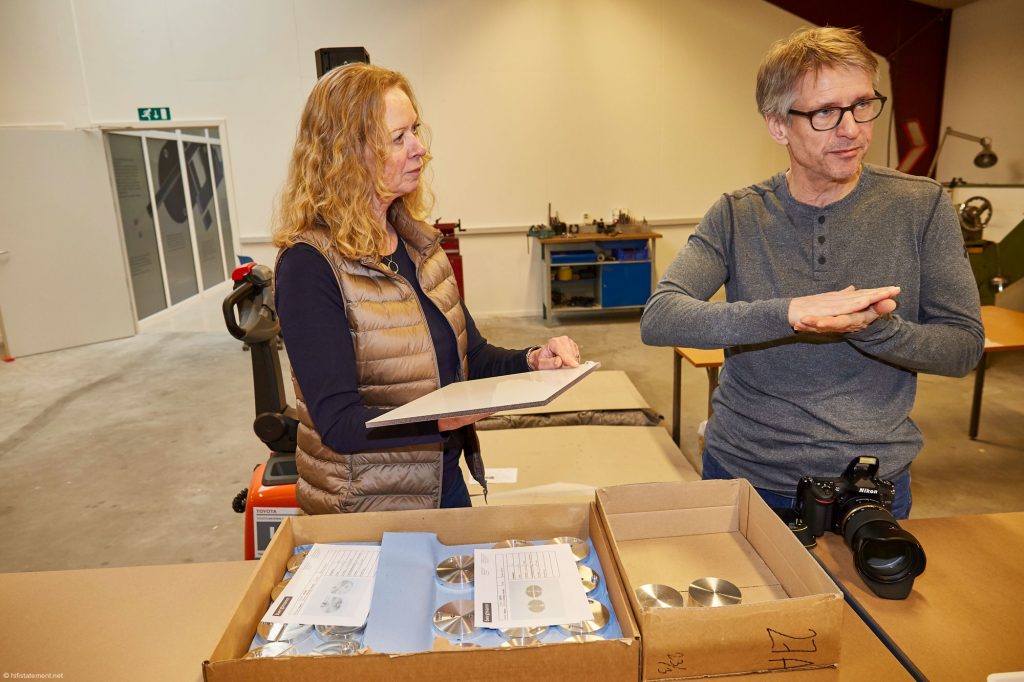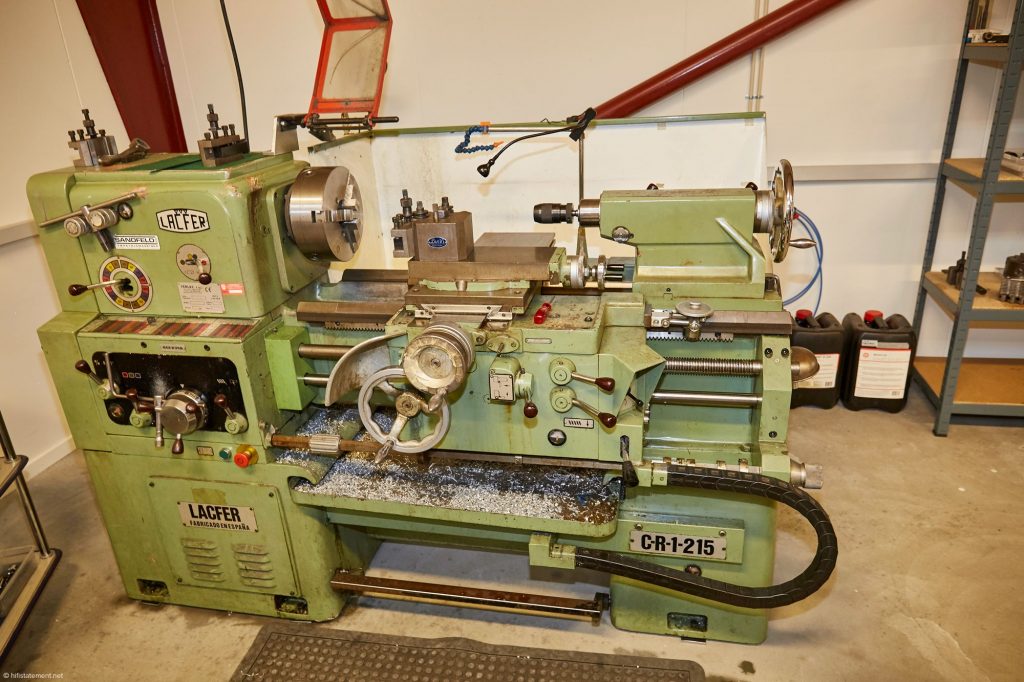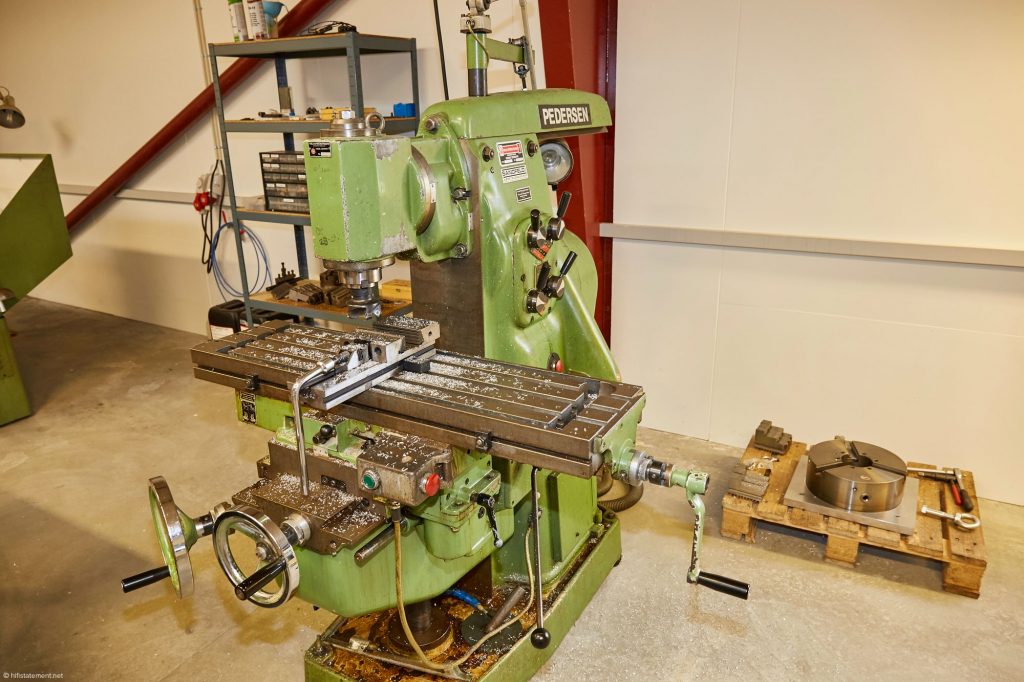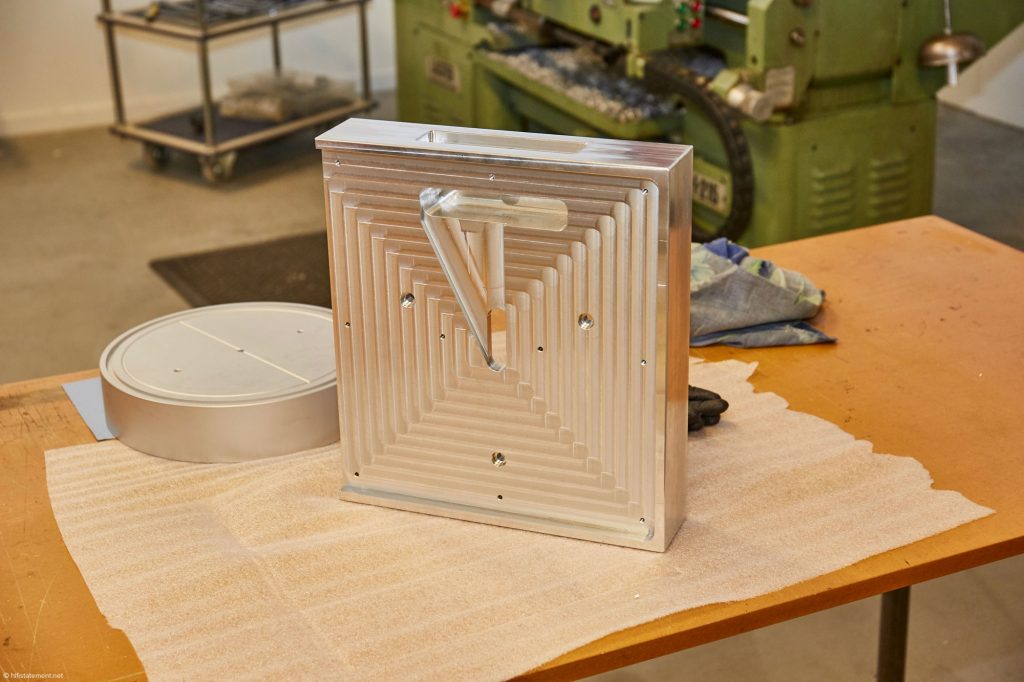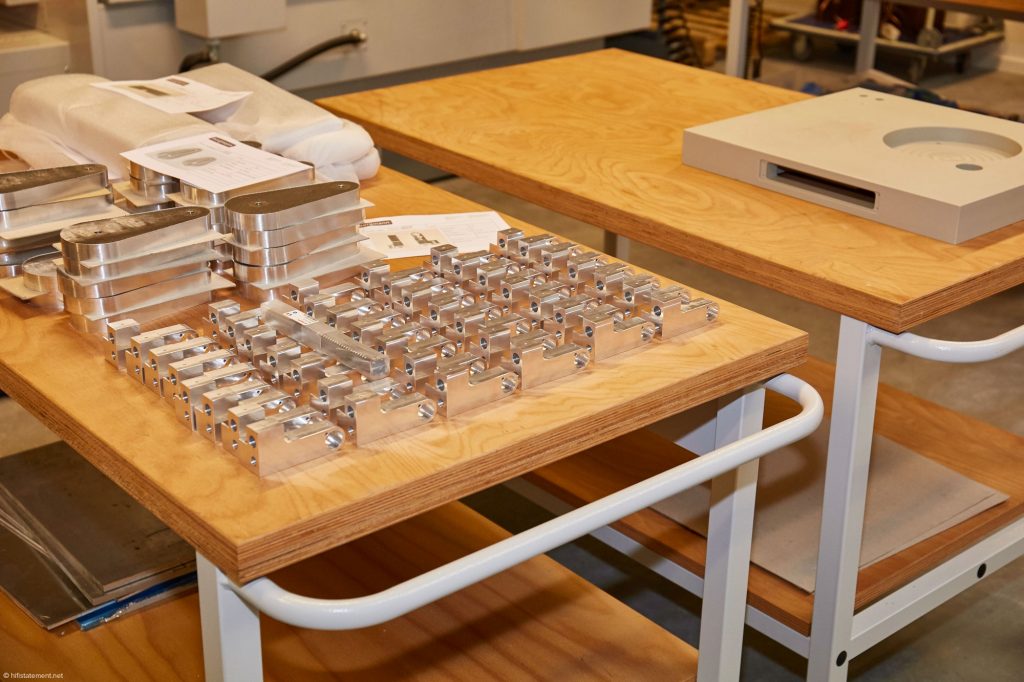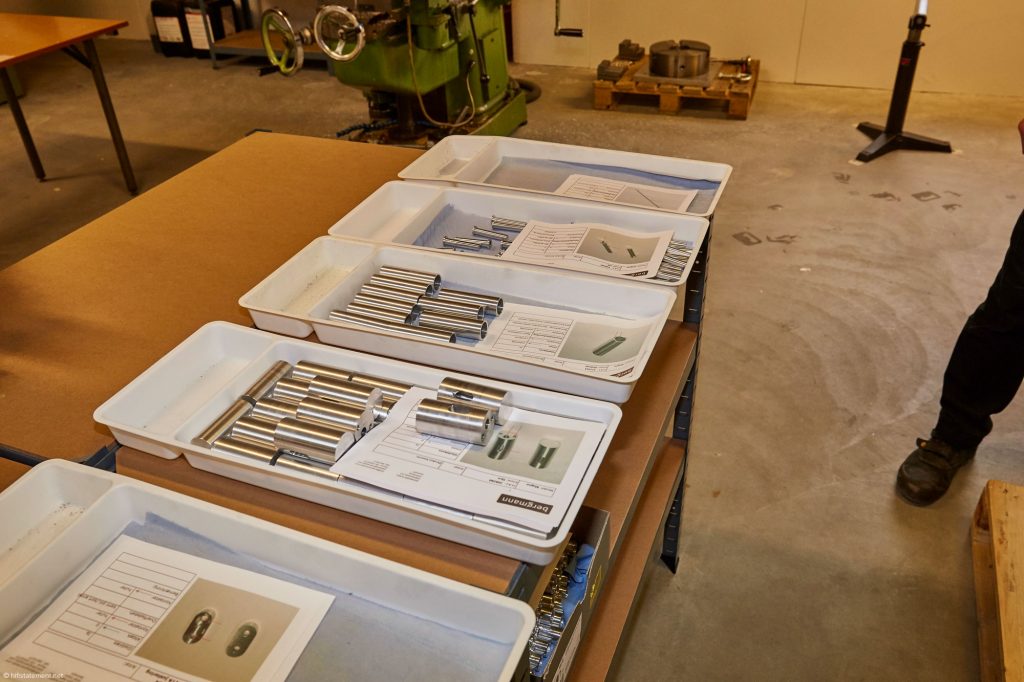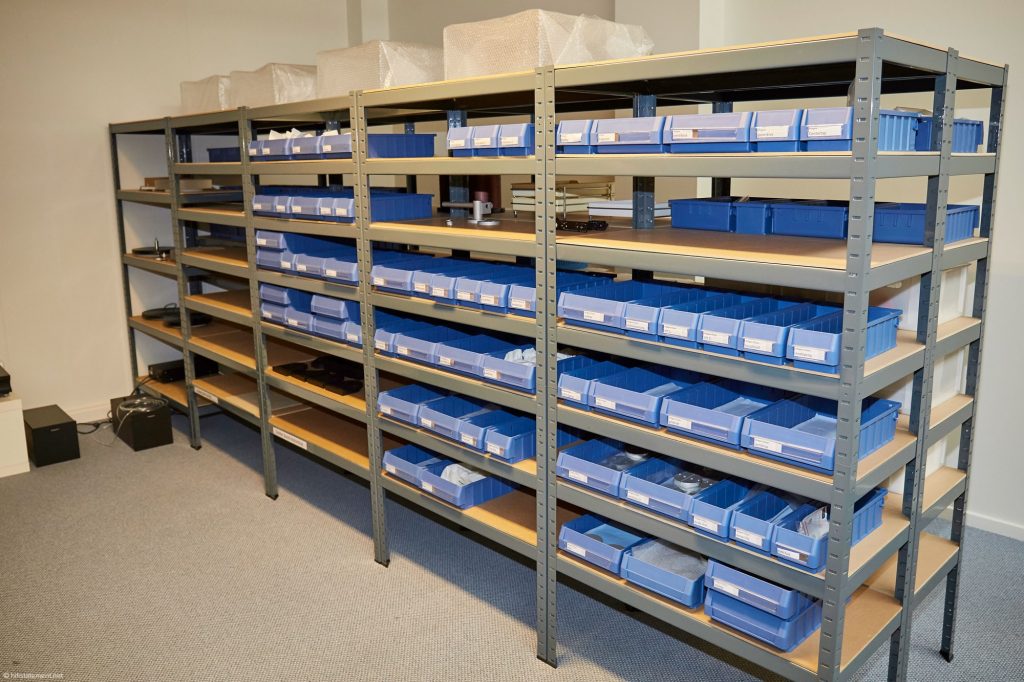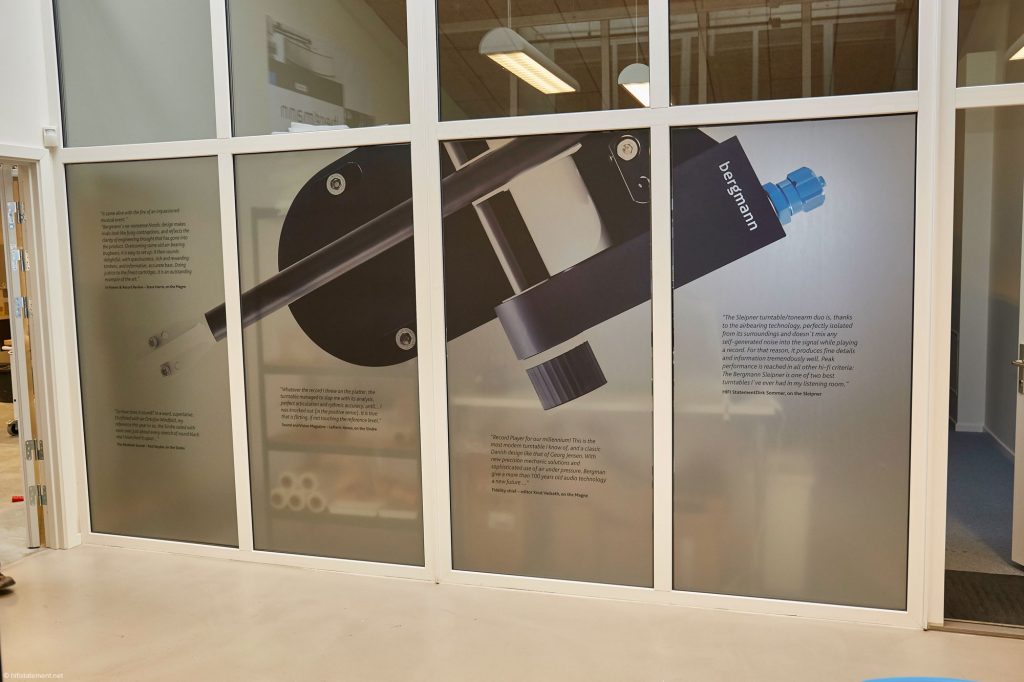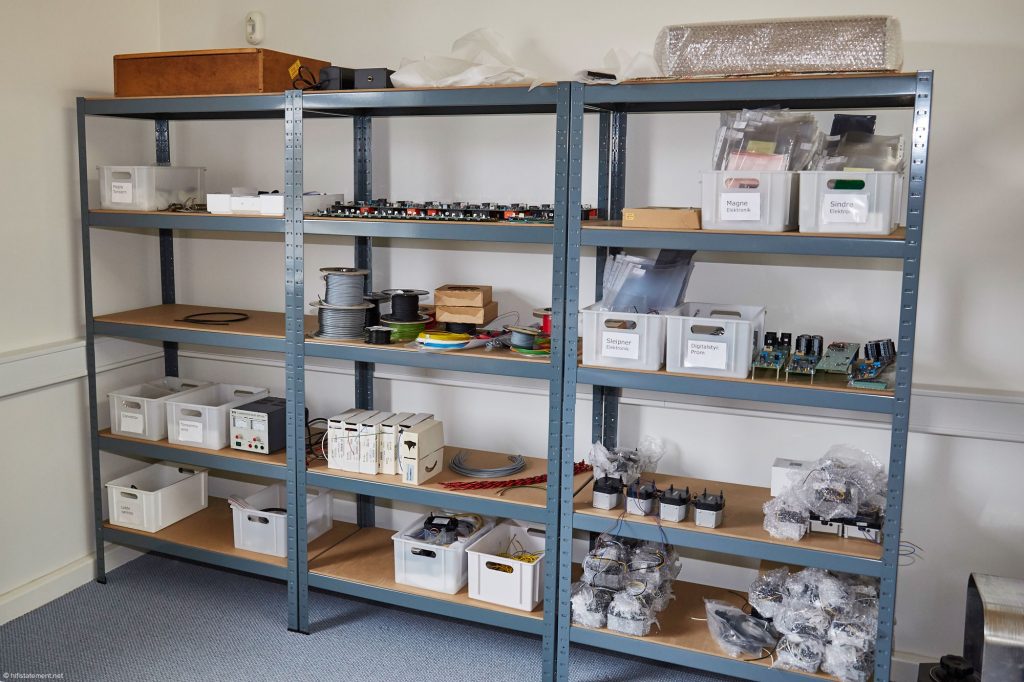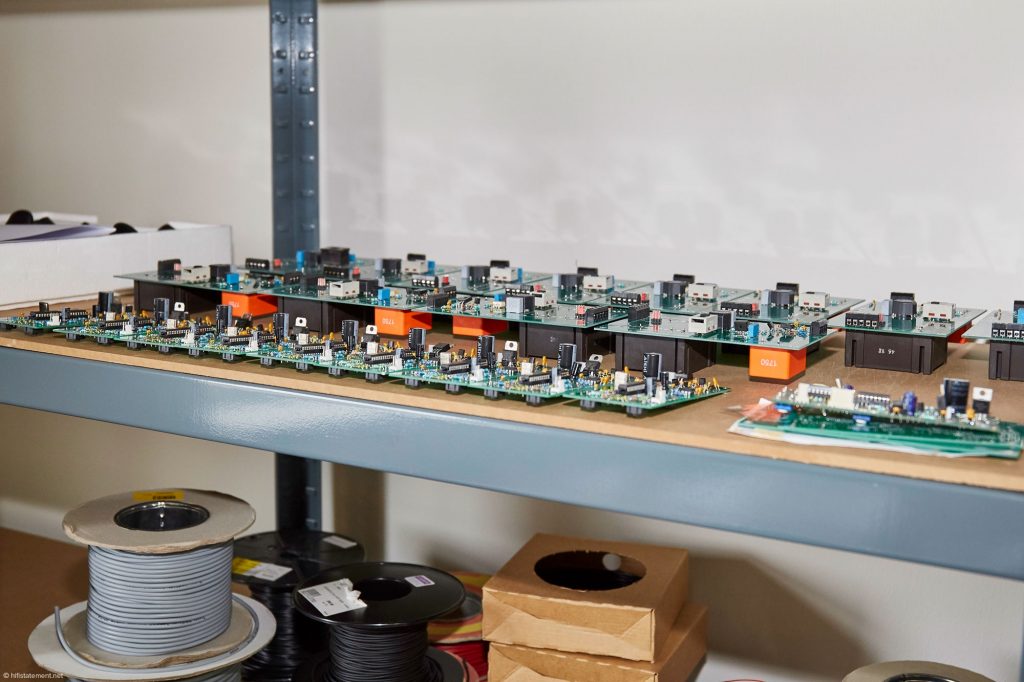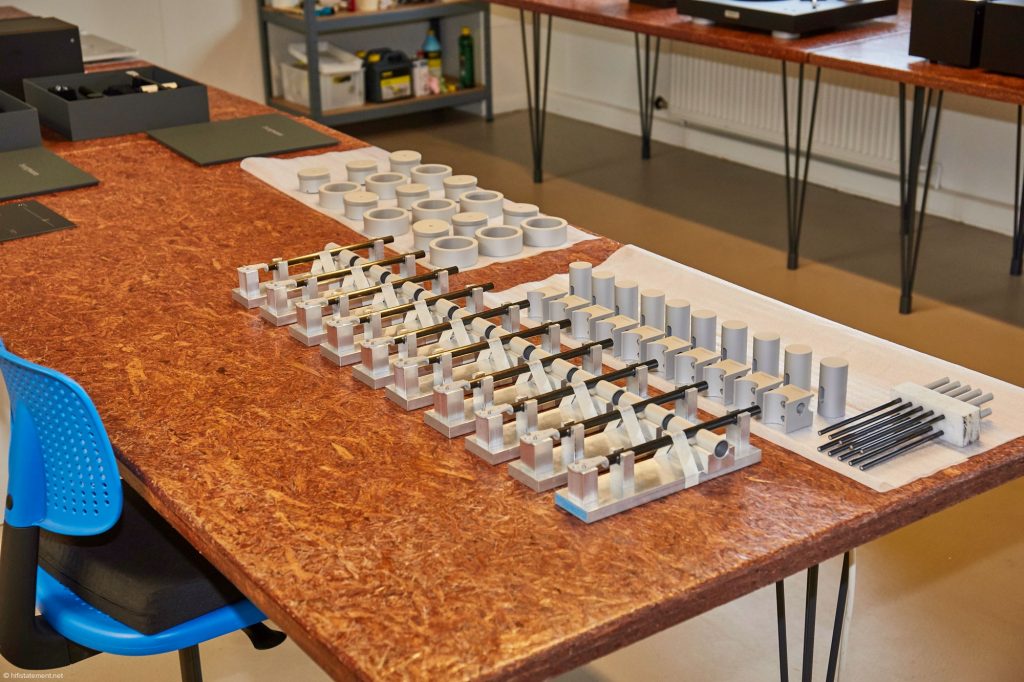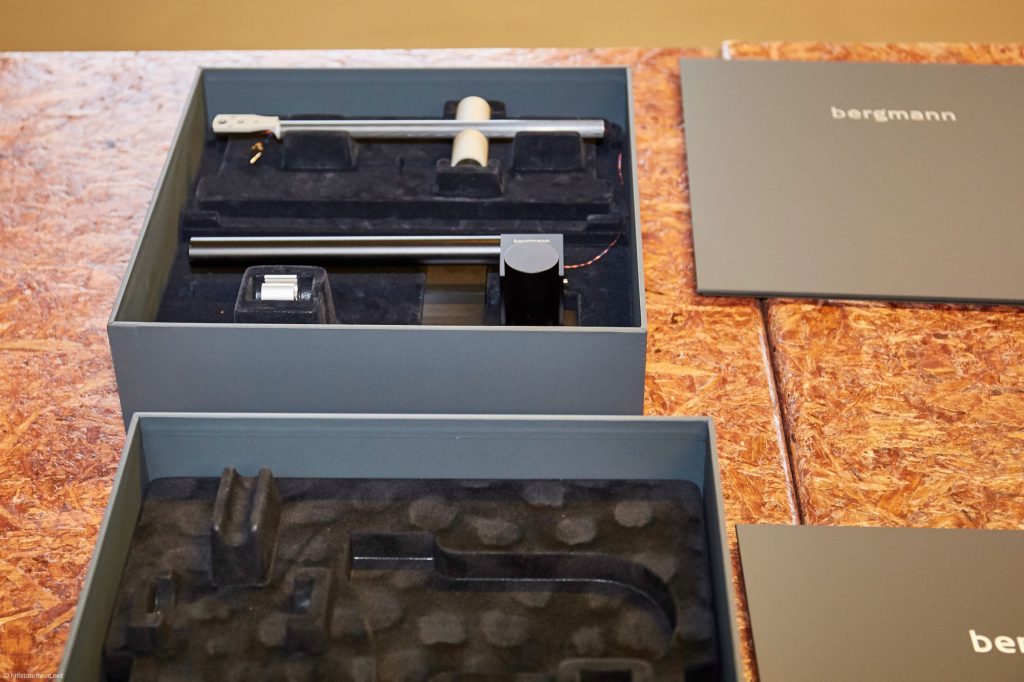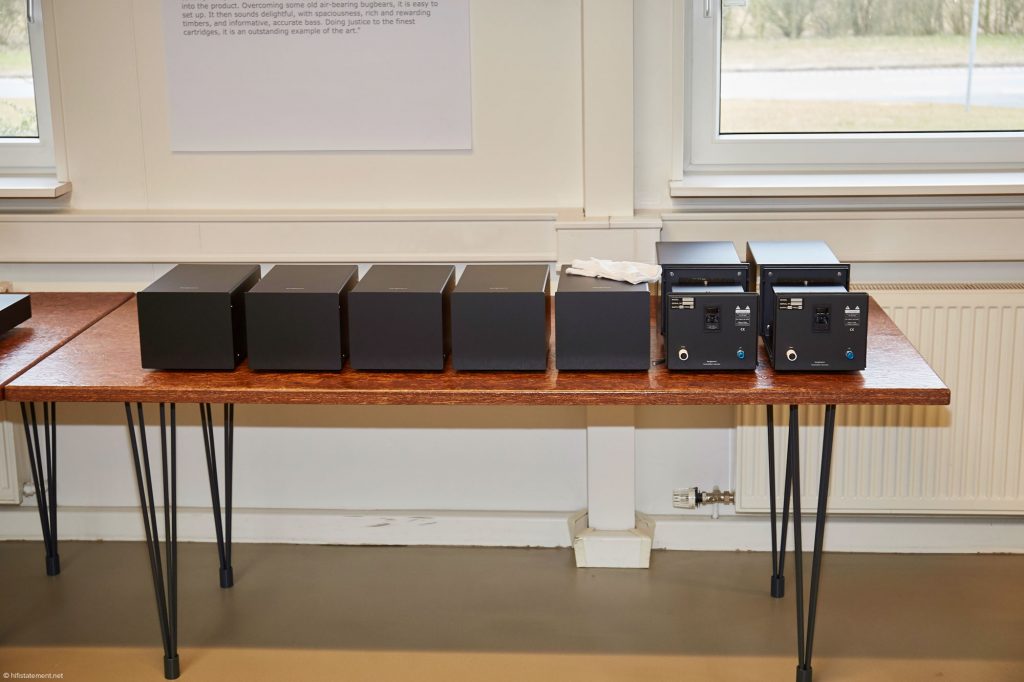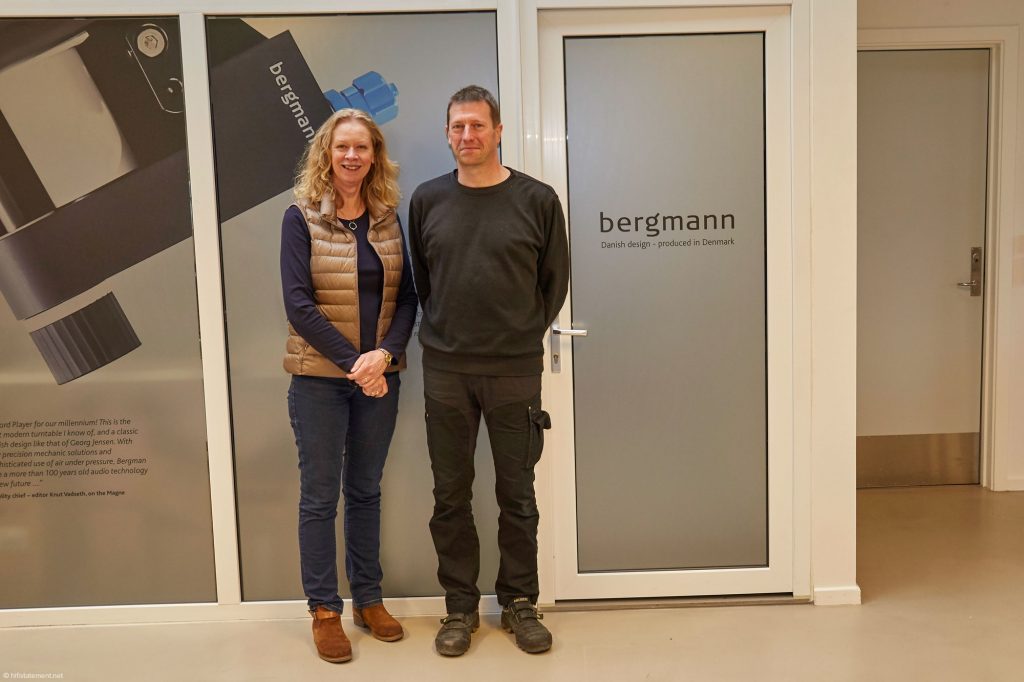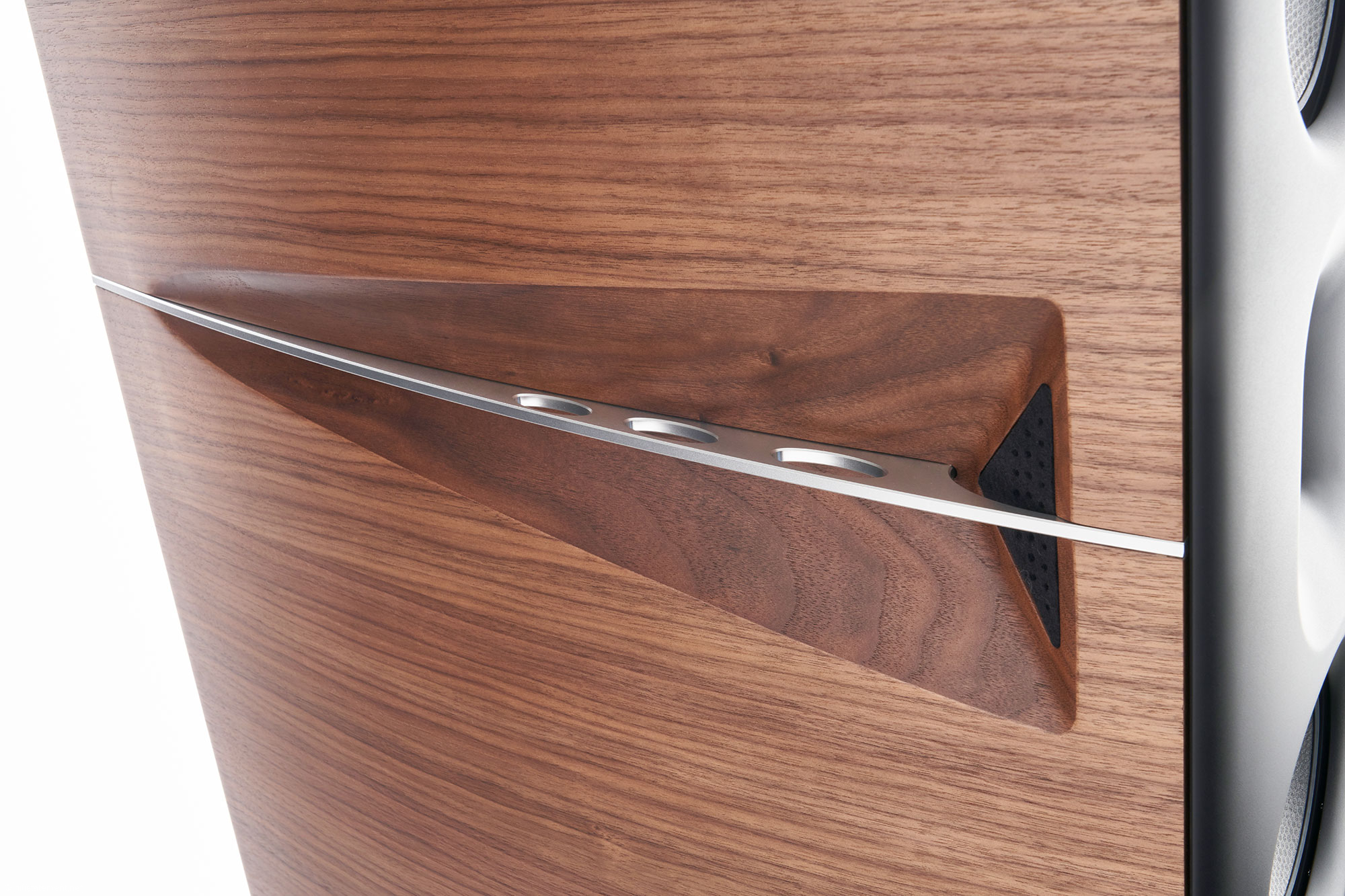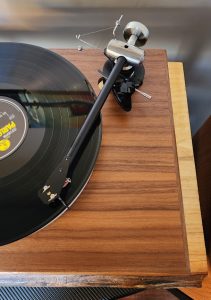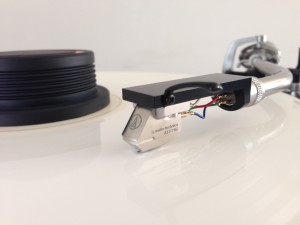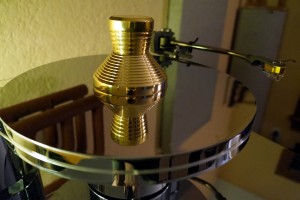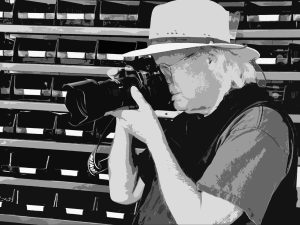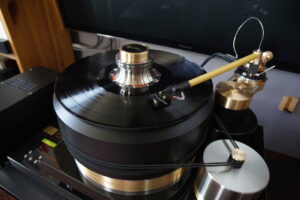Bergmann Audio is a company and not an individual—and that's a good thing. Otherwise it would not have been very charming to admit that I did not quite believe the news about their tenth anniversary. For me, the Danish manufacturer appeared to be much older, basically due to their technically independent designs seeming to have successfully established themselves in the analogue sector for decades.
Well, Bergmann Audio is being internationally successful. The turntables and tonearms are characterized by intelligently engineered technical details that aren't to be found anywhere else—but, in one point I've gone wrong with my assessment. The company, as I was informed during my visit to their headquarters in Hobro, was founded almost ten years ago: The birthday celebration will take place in autumn this year. In the meanwhile, it happened to be also correct to say that Bergmann Audio is not an individual, even if Johnnie Bergmann Rasmussen developed and built the first turntables all by himself. After launching the Sindre to the market, Eva Seiberg joined the company. Other employees have not been added since then, which is quite significant as Johnnie B. wants to have a one hundred percent control over every step in the fields of development and manufacturing. Marketing and all financial matters he likes to leave to his wife.
Eva Seiberg and Johnnie Bergmann seem surprised by the author's sustained enthusiasm for the Sleipner
Eva Seiberg previously worked as a fashion designer for more than 20 years. Her independent design studio with four employees used to design fashion for different manufacturers. After years of employing herself with sportswear, she got bored and just didn't feel like designing just another ski jacket for the market, she recounted. At that point it was about time for her to join Bergmann Audio – but not as a designer. It's her husband that exclusively accounts for the sober, minimalistic and functional visual appearance of all that noble analogue gear. As already mentioned briefly in the review on the Sleipner—for me, still one of the three or four best sounding turntables that ever found way into my listening room—Johnnie Bergmann first approached hi-fi way back in his childhood days, when, while visiting a friend, he discovered the stereo system of his friend's father, which differed from everything he had ever heard before in hi-fi in terms of detail resolution, liveliness, and spatial imaging. The turntable happened to be a Strathclyde STD 305, the amplification came from Luxman, the speakers were from B&O.
Not all parts of his formally very appealing turntables and tonearms find Johnnie B's approval in the first run. Upon request, he likes to also show his collection of the different design variations
After educating as a mechanical engineer, he got his first full-time job in 1987, and invested almost all the money he had been earning in his first audio system, comprising an NAD amplifier, Dali speakers, and a Micro Seiki DDX 1500. Later on, he also used a Linn Sondek and occasionally also an Axis. "In his apartment, he had a super stereo, but initially almost no furniture," Eva Seiberg states with a twinkle in her eyes about that phase in his life. Johnnie Bergmann, however, quickly redirects our attention to his developments: At that time he already got convinced of the superiority of air bearings for turntables and tonearms, and way back in 1988 he started to draw his first drafts for the bearing of the Sleipner. His reference then had been the Forsell Air Reference.
The different variants of components, which didn't make it into serial production, hardly become obsolete
In parallel to his main occupation in a company for tool manufacturing, Johnnie Bergmann started developing and producing his first turntable during his leisure time. And for a long time to come, as well as later for the first series of ten Sindres, he crafted almost all the necessary parts on purely mechanical milling and lathe machines—by merely using his hands and brains. In the fall of 2008, the small-lot series got completed, and its builder hoped to sell it within a year—but this planning quickly proved wrong. After a Danish web magazine had presented the Sindre, within one or two weeks three turntables got sold, and just a day after the article had been published, a Norwegian distributor, who wanted to add the Sindre to his portfolio, immediately ordered a turntable. (Incidentally, Bergmann Audio is still working with this distribution company up to the present.) Shortly afterwards, the Norwegian distributor, and also one from Hong Kong, contacted the Danish couple. To make it short: The initial phase of Bergmann Audio developed so positively that half a year after the Sindre had been presented to the public, Eva Seiberg and Johnnie Bergmann gave up their previous jobs and took the chance on their move into self-employment, a decision that they haven't repented of.
Werner Obst has been selling Bergmann Audio since 2010: he knows his sales product down to the last detail
Bergmann Audio quickly extended its portfolio to three models: To the Sindre have since been added the Magne and the Sleipner. And the last happens to be something very special, because here the platter spares a spindle, and therefore avoids any mechanical contact to the non-moving part of the turntable—at least if you decide on the model in which the record is pressed by a weight to the platter, instead of being held in place by a vacuum. In the vacuum version a rubber seal is located between the fixed bearing block with its air outlet apertures and the platter. While all other air-bearing turntables known to me use a spindle that is surrounded by compressed air, thus stabilizing the platter horizontally, the Sleipner features a platter shaped in its cross-section like an inverted "U" and rotating above the bearing block with the air emerging from its top section and laterally all-round. A higher air pressure on the opposite side of the motor ensures that the platter hovers perfectly centered above the bearing block, despite the driving belt exerting its tractive forces on the platter. The air volume therefore has to be adjusted very precisely to allow the bearing to work perfectly and to accentuate the sonic advantages of this principle. As the aforementioned review showed, this turned out to work very well, especially if one relies upon the factory settings. During the testing period, which unfortunately happened to be much too short, there didn't appear any reason at all to change it.
It's not about a social visit to their home. We got invited because Johnnie Bergmann sonically evaluates his designs here
After a rather quiet, almost four-hour drive from Hamburg airport to the north, Werner Obst, who has been selling the Bergmann Audio products in Germany since 2010, and I finally reached the industrial area of Hobro. Here the turntable manufacturer uses very spacious low-rise premises with two large halls—one serving as a warehouse for the raw materials and a few of the finished products, the other hosting the metalworking section. Attached to that we found another large space, from which the finished parts warehouse and the offices of Eva Seiberg and Johnnie Bergmann had been divided. On the remaining—and considerably larger—area, several working tables served for the assembly of tonearms, turntables and compressors. Even though there was a kitchen space with plenty of seating in the lower-ceiled side wing of the building, we nevertheless took a seat at one of the assembly tables after a brief welcome coffee with the Bergmann Audio staff—in person, Eva Seiberg and Johnnie Bergmann.
Here, our host showcased the first version of his new linear tracking tonearm – but, without air bearing this time
During our quite informal chat about the company, I wondered—as already mentioned above—that the company will be celebrating only its tenth anniversary this year. All the more astonished—or should I say: horrified?—I was, as one of our two hosts almost coincidentally mentioned that the Sleipner is currently no longer made. There are still one or two of them available. Soon the model will become history. Even though I had not tested any other Bergmann Audio turntable except this particular model, I am firmly convinced that this one offers the best value for money in terms of sound quality—or should I say, "offered"? Sonically, it easily performed on par with twice as expensive representatives of the air bearing species. But, also Werner Obst would have liked to see the best-selling model in Germany being continued in production. But Johnnie B. is intensively taking care of a new model at the other end of the price scope. However, in addition Eva Seiberg stated that their distributors had been asking for an affordable entry-level model, a fact that also Werner Obst openly confirmed.
The new tonearm is going to be an integral part of the most affordable Bergmann turntable to date. Here we see it still mounted on the Gelder, which offers the possibility to mount up to four tonearms
Johnnie B. set out that designing a good-sounding, inexpensive turntable is not a technical obstacle. Since the targeted price range—currently the retail price is being estimated to lie around 5000 euros—left no room for a compressor to give breath to the "little" Bergmann, the new turntable project is obliged to get along with a tonearm lacking an air bearing as well. However, at home in his audio system, his first linear tracking tonearm operating without compressed air is proving to be very reliable. So what could therefore be more obvious than giving a listen and also a closer look to it? And, "obvious" is to be understood here in the very meaning of the word, as the private home is only a few driving minutes within sight of the company. In case Eva Seiberg and Johnnie B. have to organize their working time differently, one can take the car, while the other can do the distance in reasonable time by foot.
Johnnie B. is using a cartridge from Dynavector for testing purposes
Although the audio system in the living room performed on quite a high-resolution level, it nevertheless let you feel that it hadn't been fine-tuned to the room over the years. Eva Seiberg and Johnnie B. have only been living in this house for about a year now. But with or without fine tuning, and without having any comparison, I hardly could evaluate the merits of the new tonearm in this somewhat unfamiliar system. But it was clear that the linear tracker proved to correctly follow the groove even with slightly eccentric records. And, regarding the overall sonic aspect, there was nothing to complain about. Therefore, we will be curious to know what Bergmann Audio is going to show at the High End.
While listening to one more track or two, I asked both of them about their tastes in music: Johnnie B. recalls progressive rock his favourite genre and mentions bands like Genesis, Jethro Tull, Pink Floyd and Rush. Later on he added classical music and jazz, but primarily to assist him during his developments. Eva Seiberg told me that recently she and Johnnie had truly enjoyed a 3-LP album with the music of Carmen. Apart from that, she shares the musical taste of her husband, except for… Jethro Tull. The evening then came to an end in a cosy restaurant at the Hobro harbour, located at the end of the Mariager fjord.
Almost a revolution at Bergmann Audio: ball bearings instead of air bearings to ensure trouble-free horizontal movement
The next morning we again met in the manufactory and started a little walk-around. In the warehouse where the raw materials were being stored, Johnnie B. told us that he initially used "aircraft grade" aluminum, but then continued having problems with it during the galvanizing process. Now he is using a less rigid alloy, which allows for a better surface quality. Sonically, there were no differences to be heard between the two materials, he reported. And in addition, the amount of source material did also make a difference: Initially, he got the platters machined from a block of 310 millimeter diameter, which now and then led to slightly "cloudy" surfaces, even when using the softer material. Since they now are turned from blanks with a diameter ten millimeters larger, the problem disappeared. And here it is why: While the aluminum cools down in temperature, material impurities normally concentrate in the fringe—which simply is machined away now. In this case a higher percentage of source material and longer processing times led to a better surface quality. Johnnie B. critically accompanies every stage in the development of his products, but that I did already mention.
The shape of the wheels and the guide rail make a special vertical bearing indispensable. The serial version will probably differ significantly from this prototype
However, with increasing quantities it turns difficult to keep the control of each manufacturing step on the accustomed level, and that doesn't really make things easier. Bergmann Audio has recently been producing up to 80 turntables a year. Johnnie B's conventional milling and lathe machinery came to reach the limit, which probably ended in killing the production of the elaborately made Sleipner. The intention to manage the required quantities by maintaining or even increasing the quality, finally led to major changes: About a year ago, Eva Seiberg and her husband left the town of Karup, rented the current production facilities in Hobro, leased CNC-controlled milling and lathe machines, and moved into a new private domicile. Of course, Johnny B. did not break up with his hand-operated machines, and that's because there isn't the slightest need: the factory in Hobro offers plenty of space. Thanks to these modern means of production, Johnnie B. now has sufficient time again to take care of new developments, such as the proposed "small" turntable.
The building's first hall accommodates the raw aluminum profiles…
As Werner Obst had already told me on the way to Hobro, for quite a while now Johnnie B. has been thinking about a model that's even more sophisticated. This he willingly confirmed after being asked about it. However, where his plans are going to take him, he did not disclose at all. He remained equally ambiguous when we addressed a possible reissue of the Sleipner. Thanks to the modern machinery around, this surely wouldn't encumber him as the company's CEO too badly. Even if Christmas isn't round the corner, a Sleipner Mk2 already has conquered the top of my analogue wish list, accompanied, of course, by the possibility of mounting more than one tonearm to it! But let's see what happens. Maybe we'll hear more about it at the forthcoming High End show in Munich. Until then, I'll divert myself with the new top-of-the-range tonearm model: Next week it is expected to have an Odin shipped from Hobro to Gröbenzell. However, Bergmann Audio will remain an exciting topic in Hifistatement also in the future, period!
... and not only a few
For platter and chassis, Johnnie B. uses blocks of solid aluminum
The very heart of the machinery: a CNC lathe and ...
... the 3-axis CNC machine from Microcut
Johnnie Bergmann executes the programming of the machine directly at the operation panel
CNC programme and finished component
In the first step, the source material is gauged
This shelf carries several devices designed by Bergmann, that are used to get the source materials fixed in the CNC machine
This platter holds by means of a vacuum those plastic plates, from which the turntable mats are manufactured
Eva Seiberg and Werner Obst discuss the machining of the turntable mats
A classic lathe that has been serving Johnnie B. faithfully in the production of turntables and tonearms for many years
This classic milling machine without CNC support has also been used for a long time in production
The chassis of a Gelder in its original raw state
The CNC machines imply a small-scale serial production
Before leaving the factory for the galvanizing process: components carrying individual instructions for surface treatment
The warehouse for finished goods…
…is located behind this partition wall, showing an illustration of a tonearm and excerpts from reviews
The shelves in Johnnie B.'s office are used for the storage of electronic components for pumps and motors
The equipped PCB's are supplied by an external company
Administrative tasks can obviously be fun
Tonearm parts before assembly
A tonearm housed in an attractive packaging
The production of compressors
There can be no report about an audio company without depicting the staff flanked by the company logo!




